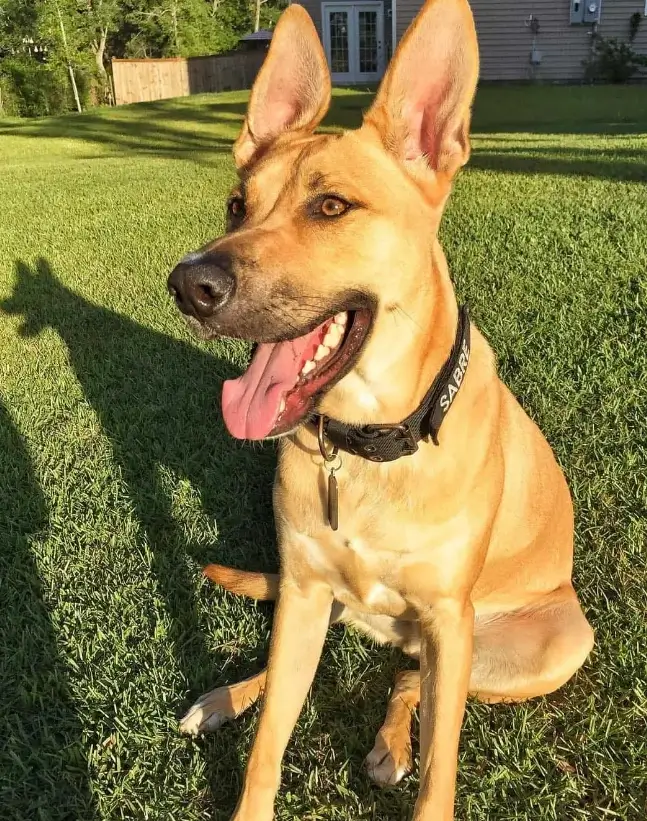The Great Dane Belgian Malinois Mix is one of the most intriguing canine hybrids that combines the elegance of the Great Dane with the sharp intelligence and agility of the Belgian Malinois. What results from this pairing of work and show lines? Let’s explore this particular breed.
What is a Great Dane Belgian Malinois Mix?
A Great Dane Belgian Malinois mix is a cross between a purebred Great Dane and a purebred Belgian Malinois. This hybrid blends the size and temperament of the gentle Dane with the agility and trainability of the energetic Malinois.
What Does a Great Dane Belgian Malinois Mix Look Like?
- Large, sturdy build ranging from 70-150 lbs
- Short, dense coat in fawn, black, brindle, or merle
- Triangular ears that stand erect
- Long muzzle and a robust, muscular frame
- Size closer to a small Great Dane
View this post on Instagram
Origin
The Great Dane descends from German boarhounds and the Malinois originates in Belgium. Deliberate crossing of these lineages likely began in the last decade, as designer hybrids became popular.
Temperament
This mix balances the calm steadiness of the Great Dane with the energetic drive of the Belgian Malinois. They can make devoted companions when furnished with plenty of activity and training. You have to curb barking and prey-drive tendencies through early socialization.
Common Health Issue
Common health problems in the Great Dane Belgian Malinois mix include:
- Gastric Dilatation Volvulus (GDV): Large and deep-chested breeds like the Great Dane are prone to GDV, commonly known as bloat. This condition involves the stomach filling with gas and twisting itself, posing a serious and life-threatening emergency.
- Hip Dysplasia: Both Great Danes and Belgian Malinois are susceptible to hip dysplasia, a genetic condition where the hip joint doesn’t fit properly into the hip socket. This can lead to arthritis and mobility issues.
- Elbow Dysplasia: Elbow dysplasia is another joint disorder that may affect this mix. It involves abnormal development of the elbow joint and can result in lameness and pain.
- Cardiac Issues: Great Danes, in particular, are prone to certain heart conditions. Regular veterinary check-ups are essential to monitor cardiac health and detect any issues early.
- Progressive Retinal Atrophy (PRA): Both parent breeds may carry a genetic predisposition to PRA, a degenerative eye disorder that can lead to blindness over time.
- Bloat: The deep-chested structure of the Great Dane and the active nature of the Malinois may contribute to an increased risk of bloat. Feeding smaller, more frequent meals and avoiding vigorous exercise immediately after meals can help mitigate this risk.
- Joint Issues: Large breeds are generally prone to joint issues, including arthritis. Maintaining a healthy weight through proper nutrition and regular, low-impact exercise is crucial for joint health.
- Skin Conditions: Belgian Malinois may be predisposed to certain skin conditions, and the mix might inherit these tendencies. Regular grooming and attention to skin health are important.
Care and Grooming Needs for a Great Dane Belgian Malinois Mix
If you plan to buy or adopt a Great Dane and Belgian Malinois mix, you should be prepared to observe a range of care and grooming practices to ensure it’s always in the perfect state. They include:
Regular Exercise
This mix benefits from regular, moderate exercise to maintain a healthy weight and mental well-being. Both parent breeds are known for their active nature, so daily walks and playtime are essential.
Daily exercise needs are demanding. These mixes thrive when given a job or canine activity to participate in. Advanced training potential makes them suitable for sports, therapy work, or service roles.
Balanced Diet
You should provide a nutritionally balanced diet suitable for large and active breeds. Consult your veterinarian to determine the best feeding schedule and dietary requirements for your Great Dane Belgian Malinois Mix.
Grooming
Brush your dog’s coat regularly to prevent matting and reduce shedding. The frequency of brushing may vary depending on the length of the coat. Use a slicker brush or comb to maintain their dense fur.
Bathing
You should bathe your Great Dane Belgian Malinois Mix as needed, typically every 6-8 weeks or when they get dirty. Use a dog-friendly shampoo to keep the coat clean and healthy. Be cautious not to over-bathe to avoid skin dryness.
Dental Care
Practice regular dental care by brushing your dog’s teeth several times a week. Dental chews or toys can also contribute to good oral health.
Ear Cleaning
Check and clean your dog’s ears regularly to prevent wax buildup and potential infections. Use a veterinarian-approved ear-cleaning solution and avoid inserting anything deep into the ear canal.
Nail Trimming
Keep your dog’s nails at a comfortable length. Regular walks on hard surfaces may naturally wear down their nails, but check and trim them as needed to avoid discomfort.
Training and Mental Stimulation
Both the Great Dane and Belgian Malinois are intelligent breeds that require mental stimulation. Engage your mix in training sessions, puzzle toys, and interactive play to keep their minds active and prevent boredom.
Socialization
Start socialization early and expose your Great Dane Belgian Malinois Mix to various people, environments, and situations. This helps ensure they are well-adjusted and comfortable in different settings.
Veterinary Check-ups
Schedule regular veterinary check-ups to monitor overall health. Large breeds may be prone to certain health issues, and early detection is crucial for effective management.
Joint Health
Large breeds are susceptible to joint issues. Provide joint supplements if recommended by your veterinarian, and avoid excessive jumping, especially during their growth phase.
How Much Does a Great Dane Belgian Malinois Mix Puppy Cost?
From health-tested parents, you should expect to pay between $800 to $2,000 or more for a Great Dane Belgian Malinois mix puppy. Show breed lines with papers often run higher. Adoption fees for rescued young adult mixes start around $400.
Conclusion
Blending the relaxed Great Dane with the driven Belgian Malinois makes for a devoted, trainable hybrid capable of excelling in canine roles. Their active nature and size require an experienced owner. Health and temperament should remain top breeding priorities over color or other fur qualities. Consider adopting before buying a pup.
READ ALSO: What Does a Great Dane Pug Mix Look Like?
FAQs
Is the Great Dane Belgian Malinois mix a good guard dog?
Yes, its protective instincts, trainability, intelligence, and size make it an excellent guard dog and watchdog.
What health issues does the Great Dane and Belgian Malinois mix have?
Hip/elbow dysplasia, eye problems, bloating, and some skin allergies are the most common health issues facing this crossbreed.
Does the Great Dane Belgian Malinois mix shed a lot?
Yes, its short dense coat sheds moderately year-round. Expect some seasonal blowing of the coat, too.
How much exercise does a Great Dane and Belgian Malinois mix need daily?
At least 60-90 minutes of vigorous activity like running, hiking, and swimming plus mental stimulation through training.
What colors does the Great Dane Belgian Malinois mix come in?
Fawn, black, brindle, merle, black and tan. Blue or Harlequin Danes should not be mixed due to health risks.
